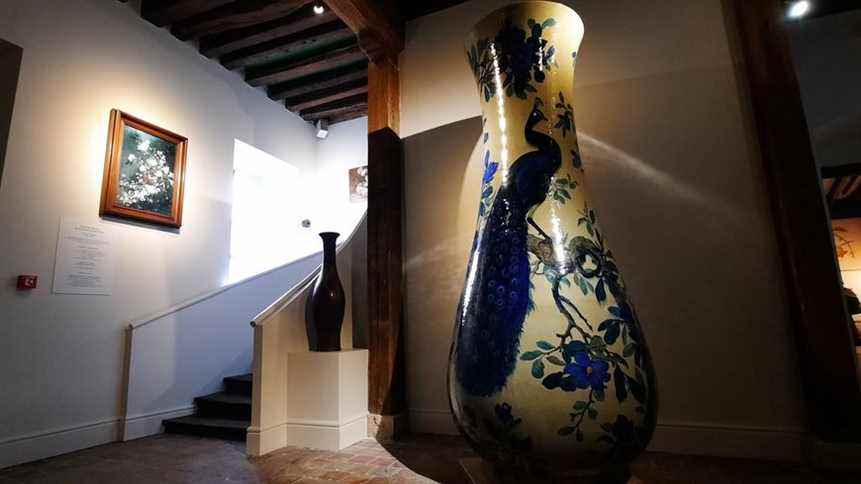Crowning of its bicentenary, the earthenware factory in Gien will soon unveil its brand new museum to the general public. It’s a five year old project which finally sees the light of day. Through two centuries of history, the museum gives pride of place to the famous manufacture, created in 1821, its prosperous and outstanding periods, its symbolic objects without forgetting the know-how of its workers above all.
– Christophe Dupuy
Large portraits of the employees of the factory
After taking advantage of the government’s stimulus plan to modernize its production tools, the Gien earthenware factory is continuing its renaissance with the upcoming opening of its brand new museum. Completely rehabilitated, the building has now doubled its exhibition capacity increasing from 200 to 400 m2. Guided tour and direction first of all the first floor and its large room which serves as a temporary exhibition. On the walls, all around the huge room with exposed beams and concrete slabs, huge photos of those who throughout the industrial process make the know-how of the manufacture have been hung. The large portrait, most often of an employee, represents each stage of production within the manufacture. This idea is the fierce will of Yves de Talhouët, the CEO of the Faïencerie de Gien because “behind the industrial process, there are women, a few men but many more women, know-how and this must always be remembered”.

– Christophe Dupuy
One floor below, the 28 meter long vaulted cellar retraces two hundred years of Gien earthenware history through several objects from different collections but also with the help of stories, maps and photographs.

– Christophe Dupuy

– Christophe Dupuy
Manufacture is not just crockery
We then go to a drawing room where large boards of collection motifs are displayed. Finally at the end, there is the salon called Jean-Félix Bapterosses, in homage to this French industrialist and politician, who after having founded a porcelain button factory in Paris in 1845, bought the Briare earthenware factory in 1851 and then gradually the Gien earthenware factory from 1864. This small living room contains unusual objects from the manufacture. An alphabet with inkwells, clocks, fonts, zoomorphs because the factory “it’s not just dishes” proclaims Anne-Cécile Sourisseau scientific curator who worked on the museum project. It is in this living room that also throne the famous peacock vase at the Paris Universal Exhibition in 1889. “The symbol of earthenware” explains Anne-Cécile Sourisseau “which shows the excellence of Gien’s work with the blue colors of the peacock feathers and his size of 3 meters high”.

– Christophe Dupuy
This brand new museum, which adjoins the manufacture, cost 2 million euros. The work was financed in particular by the Center-Val de Loire Region to the tune of 300,000 euros and the departmental council of Loiret for the same sum, but also the City of Gien to the tune of 150,000 euros as well as the Communauté des Communes Giénnoises. For further questions of security, the museum will not open its doors to the public until next January.
